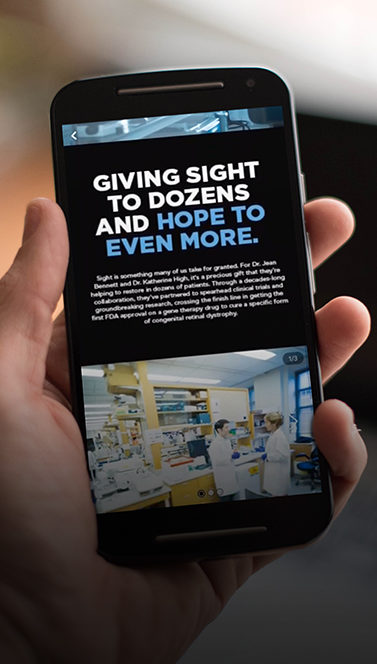Health Marketing for a New Mindset
- Health & Wellness
- 08.10.17
- 3 Min Read
Over the past decade, policy shifts have dramatically affected the healthcare landscape and relationship between patients and providers. The evolving relationship has changed the way patients interact with healthcare and how they form expectations of providers.
In recent years, patients have started to behave more like consumers, and, in turn, expect more than quality treatment from their healthcare providers. The shift from the patient to consumer mindset has made the patient/provider relationship more of a two-way street, presenting providers with more challenges to keep their patients’ loyalty. Simply put, patients now want the empathy associated with high-quality care, but also the frills of a high-quality consumer experience.
HEALTH INFORMATION AND RESEARCH
Patients have more access to health-related information than ever before, and they’re leveraging this access to become avid researchers. Pew Research found that one in three Americans have gone online to research a medical condition, while 42% have searched for information about physician options and another 38% about medical facilities. Patients are now seeking healthcare the way they request other services – by searching the Internet, reading reviews and comparing prices.
The rising trend in patient research signifies a change in how patients view their relationship with potential providers. Often, patients are not automatically accepting what a doctor tells them. They see healthcare as a collaboration between themselves and their doctors, with patients taking more responsibility for their healthcare decisions. In the patient’s mind, the doctor no longer has the only say on treatments, care facilities and medications.
To meet patients’ expectations of collaboration and access, providers must not only provide care, but also be a resource for reliable and transparent information. Giving patients the ability to ask questions and find information before visiting a hospital or clinic is a great way to bolster the patient experience. Many providers have met this need through telemedicine, while others are extending their social media presence to interact with patients. By using technology to connect patients and medical professionals, providers are able to quench patients’ thirst for information while also building relationships and making sure their patients are receiving quality health advice.
TIME IS THE NEW HEALTHCARE CURRENCY
Healthcare has not always been viewed as the most consumer-friendly industry. But as insurance policies continue to be in flux, and with deductibles set to increase again in 2017, today’s patients have more of their personal finances in the game than before and will in turn expect more from providers than in the past. This will create the need for providers to shift their mindset from offering a traditional patient experience to providing a consumer experience.
The shift to a consumer experience focus not only means price transparency and access to information and care, but also a reconsideration of time. Patients are now giving their time the same value as their doctor’s time, causing convenience and speed to become an expectation, not a luxury. Patients are expecting more timely appointments and less waiting once they arrive at a facility. They don’t just want care, they want service.
To address patients’ expectations of speed and convenience, providers must take a multi-pronged approach, addressing physical space, logistics and delivery options. As noted previously, many providers have been implementing technology to bridge the convenience gap. Others though, have been building more clinics with more walk-in and urgent care options to meet timely care needs. The addition of more clinics has also revised how many providers view their satellite facilities, with many expanding the types of services offered and improving the functionality of physical structures to provide care to more patients.
As patients continue to evolve, providers will need to continually think outside of the patient care box to meet new expectations. These expectations will challenge providers, but adopting new technology and reexamining delivery methods through the prism of consumer convenience will allow healthcare providers to better understand their patients and meet their current and future needs.
Understanding the industry landscape is integral to marketing your brand or service effectively. L&S has worked hand-in-hand with hospitals and healthcare companies on patient experience initiatives involving broad research and unique creative concepting, leading to insights-based solutions that make sure consumer demands are being met. Think you could benefit from the Extra Mile treatment? Get in touch with us today.






